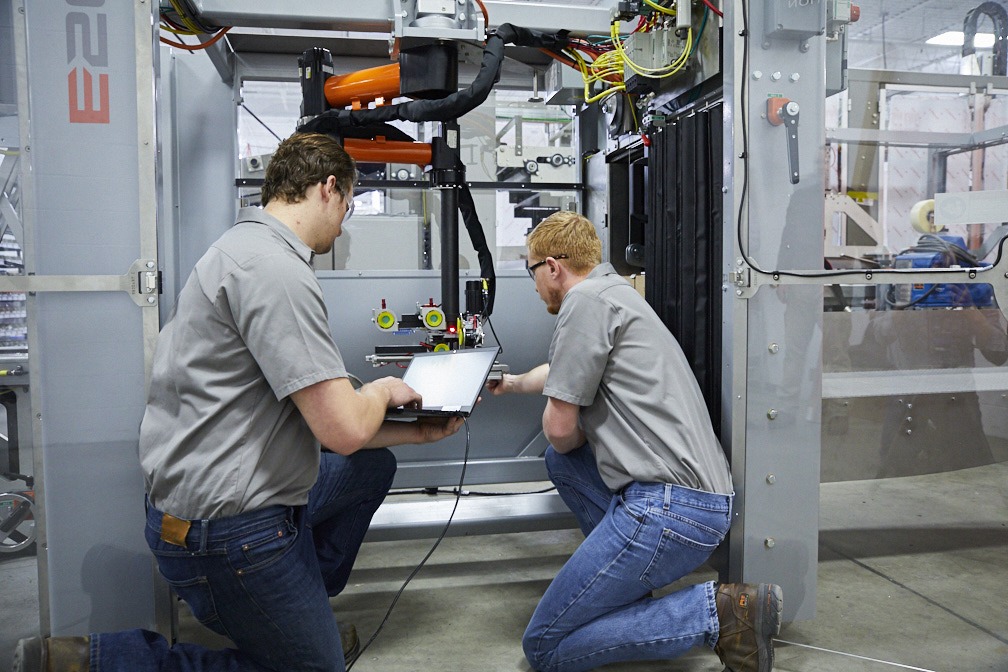Troubleshooting issues with secondary packaging equipment: Better design is step one
Published August 19, 2020
Investing in secondary packaging equipment makes good business sense. Secondary packaging automation eliminates the need to use labor to set up, fill and seal shipping boxes. When you consider that one person can set up 2-5 containers a minute versus the 20-30 a machine can set up, it’s easy to see the long-term return on investment in terms of a faster, more flexible production line along with the ability to better utilize personnel in more productive areas.
However, because secondary packaging is at the end of the production line, any problems that cause a stoppage create a ripple effect on the rest of the line. Downtime disrupts production and delivery schedules, increases product waste and adds labor costs back into the expense column. Ideally, planning ahead to anticipate and minimize stoppages is a key part of production planning. The two-fold approach includes choosing equipment that’s designed with line efficiency in mind, and resources available for the equipment that allows machinists and production managers to troubleshoot problems and get things running again.
Let’s take a look at some of the common issues of case erectors and sealers and how they’re solved through machine design and a robust troubleshooting system.
Reduce machine jams
Jams happen. Sometimes, something goes askew with the box and sometimes they involve human error, but that doesn’t mean you can’t fix them.
When the major flap of the case gets nudged ever so slightly out of position (especially in high-humidity environments), the result is either a jammed case erector or damage to the box itself. Either of these things can hold up the production line and cause issues. Case erectors should come with essential features like major flap control, which can greatly reduce the number of incidents in the line.
Human error during the loading of the case erector also can lead to jams. Even a machinist with years of experience can load an erector incorrectly. To reduce these errors, posting easy-to-read, at-a-glance reminders helps everyone double check their work and make sure the major panel and case graphics are correctly positioned and oriented before the equipment is activated. (That’s why INSITE offers easy-to-read visual guides like the correct case hand and correct case opening sequence, so when there’s a problem, you can quickly identify where it’s happening and find the source.)
Consistent case squaring
One issue with case erector machines is producing cases with skewed corners that aren’t perfectly square. Unfortunately, if the case erector fails to make perfectly square corners, the problem doesn’t come to light until the case advances through the line to the case packer. The box loses real estate and a level packing surface to hold the packaged goods. When the goods can’t fit into the container, it’s a problem that quickly cascades into a backlog or stoppage of equipment.
Active case squaring by INSITE Packaging is designed to eliminate this common issue by using photo eye technology to check for squaring before the case is sealed, activating an independently driven side belt to adjust the case as needed.
Damaged boxes and goods: Once the packing is complete, the equipment should have the ability to grab the packed case with a firm-enough grasp, but not so firm that it causes damage to the case or the product inside. Programming the machine to find the right touch for the new product after changeover can leave room for trial and error on the machinists’ part.
INSITE Packaging’s HMI system eliminates the guesswork of creating a new recipe for the job. Once the line starts moving, your secondary packaging equipment is functioning just the way you need it, with dependable repeatability.
Robotic design
Robotic design means INSITE equipment has 40-60% fewer parts compared to traditional, mechanized case erectors and sealers. The result is less breakage, fewer changepoints and faster changeovers, all of which add up to better production.
Resources at your fingertips
INSITE comes from a long tradition of listening to what the customer wants in the never-ending quest to improve production and efficiency.
Our HMI design simplifies training and learning, even for a novice machinist. The HMI also provides access to a resource library that offers plenty of troubleshooting information to make it easy to find and fix the problem.
Visit our website to access our library of videos and animations that show how the case erectors and sealers work and function, which can aid in planning your modular secondary packaging system, and provide a ready reference.
INSITE Packaging also provides all the learning materials your team needs to operate the machine, everything from owner manuals to job aids to feature videos and animations.
Finally, INSITE Packaging has U.S.-based support available 24/7.
Ready to upgrade your modular secondary packaging system with automated case erectors and case sealers? Contact INSITE Packaging today to get started.
